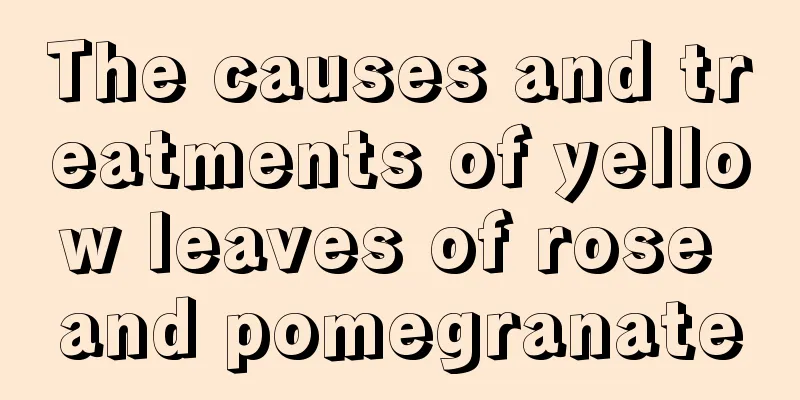The causes and treatments of yellow leaves of rose and pomegranate

1. Improper wateringReason: Rose pomegranate prefers a dry growing environment and is resistant to drought but not waterlogging. If you water too much, the soil in the pot will be too wet for a long time, and the roots will gradually rot, causing the tender leaves at the top to fade and the old leaves to gradually turn yellow. Solution: Place it in a ventilated and well-lit place, loosen the soil, and allow excess water in the pot to evaporate quickly. In subsequent maintenance, do not water immediately when you see the soil in the pot is slightly dry. Try to water when the branches and leaves begin to wilt and dry, and water thoroughly. 2. Insufficient lightReason: It likes light and is suitable for growing in warm places. If there is insufficient light, there will be problems such as yellow leaves and falling flowers. Solution: At this time, move the potted plants to a sunny and ventilated place indoors for maintenance. Sufficient light can promote its healthy growth and make its flowers more colorful. Roses and pomegranates grown at home generally will not shed leaves due to excessive sunlight, so don't worry too much about the flowers being sunburned by too strong light. 3. Improper fertilizationReason: Insufficient nutrients will cause the leaves of roses and pomegranates to become thin and yellow, and the flowers to fall off. However, it is not suitable to apply fertilizer during the flowering period. At this time, fertilizing will shorten the flowering period, cause the flower buds to drop prematurely, and can also easily cause fertilizer damage, causing the old leaves to turn yellow. Solution: When nutrients are insufficient, fertilizer should be applied in time and the amount of fertilizer should be increased. When fertilizer damage occurs, stop fertilizing, water with plenty of water, and wash away the excess fertilizer in the pot. During the flowering period, microbial agents can be used to replenish the nutrients consumed during flowering and fruiting. 4. DiseasesCause: Brown spot disease is one of the possible causes of yellow leaves on roses and pomegranates. This disease can seriously harm the leaves and fruits of trees, causing fruits to fall and leaves to turn yellow and fall off. Treatment: Timely treatment is required. If brown spots appear on the leaves, it is possible that the plant is infected with brown spot disease. It is necessary to immediately remove the diseased plants and fallen leaves and burn them in a concentrated area. Then spray it with Bordeaux solution to treat it, and then wait for it to resume growth. |
<<: Reasons and treatments for yellow leaves of moonflower
>>: Causes and treatments for yellow leaves of umbrella flowers
Recommend
Can a banyan tree be planted outside your home?
Can banyan trees be planted outside the house? Ba...
How to care for rubber trees in winter
1. Warming up and keeping warm If you want the ru...
How to remedy a frozen fortune tree
1. Pruning branches and leaves After the money tr...
How to prevent chrysanthemum root rot
symptom In the early stage of the disease, the le...
One rose tree blooms with five colors of flowers, just because it was cut with one knife! It suddenly turns into a waterfall of flowers!
Camellia grafting, quickly grow old There are sev...
What is the best rootstock for grafting roses (there are several options for tree rose rootstocks)
What rootstock is used for grafting tree roses? I...
Do strawberries need watering every day?
Do you water strawberries every day? Strawberries...
Camellia cultivation techniques and precautions
Camellia is a very popular ornamental flower know...
What to do if you fertilize camellia too much
Performance If camellia is fertilized too much, i...
Why can't I keep the succulents I bought from the flower market alive (Are succulents difficult to keep alive)?
Why is it difficult to keep the succulents you bu...
Peanuts planted in water look better than green ivy, and one plant can produce 50 fruits!
Throw a peanut into water and it will turn into a...
How to manage the perennial roots of chayote during the winter
1. Methods 1. Apply winter fertilizer: In late No...
Will Polygonatum freeze to death in winter?
1. Will I freeze to death? Polygonatum has a rela...
How to breed Thor
1. Maintenance methods 1. Temperature: Thor likes...
Specific analysis of yellowing leaves of cyclamen
Leaves curl and turn yellow Curling and yellowing...









